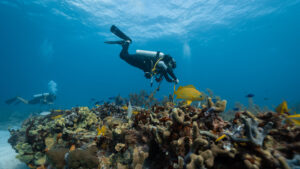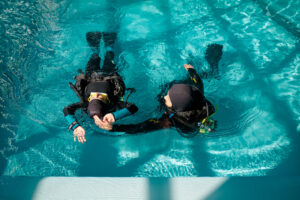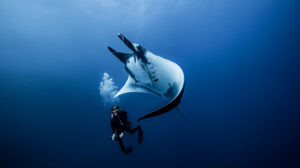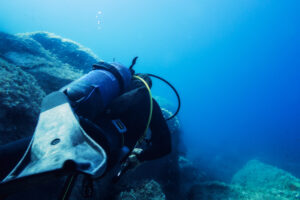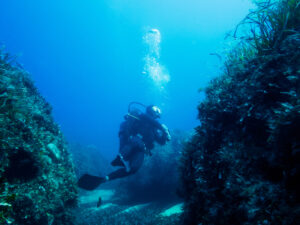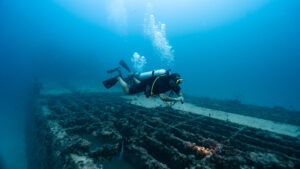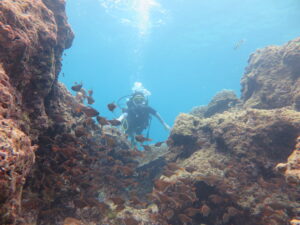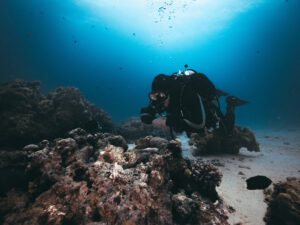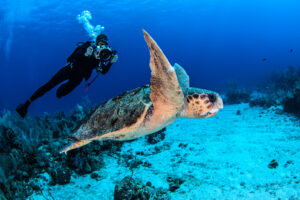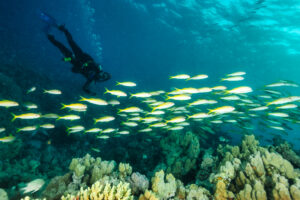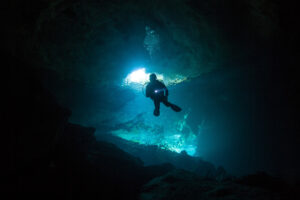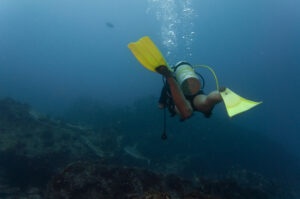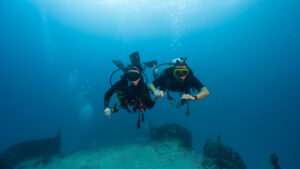What is Traverse in Scuba Diving?
A ‘traverse’ in the context of scuba diving refers to the act of passing through an underwater cave, tunnel, or a passageway by entering at one point and exiting at another. This maneuver is both exhilarating and challenging, requiring a mastery of various diving skills, an understanding of the cave’s environment, and the aptitude to manage potential risks and emergencies.
History and Evolution of Traverses
The practice of traverse dives dates back to the origins of cave diving itself. Early explorers, intrigued by the mysteries lying beneath the water’s surface, would venture into caves, tunnels, and sinkholes. As diving technology advanced and training methods improved, so too did the practice of traverse diving. Originally, traverses were undertaken by only the most daring divers, but they gradually became more accessible to advanced recreational divers. Today, a well-executed traverse is considered a hallmark of expert diving, embodying a thrilling blend of adventure, skill, and scientific discovery.
Preparing for a Traverse
The planning stage of a traverse dive involves detailed mapping, understanding the cave’s layout, and assessing potential hazards. It requires a high level of situational awareness, as divers must monitor their surroundings, keep track of their location, and maintain control of their buoyancy. Equipment-wise, a traverse dive typically necessitates redundant gear, including multiple light sources, air supplies, and navigational tools such as a line reel and compass.
Techniques for Traverse Diving
The key techniques involved in a traverse dive include finning styles that minimize silt disturbance, line laying and following, and the usage of specialized equipment such as sidemount or rebreather systems. Divers also need to master skills such as air management, decompression procedures, and emergency protocols. Communication is crucial as well, with divers employing a system of light and hand signals due to the often limited visibility and audibility in cave environments.
Hazards and Safety Measures
Traverse dives carry unique risks, and as such, require an emphasis on safety. Hazards can include low visibility, strong currents, tight spaces, equipment failure, and the risk of getting lost. Consequently, specialized training is recommended for those intending to undertake traverse dives. Safety measures include adhering strictly to the rule of thirds for air management, always maintaining a continuous guideline to the cave’s exit, and employing the buddy system for enhanced safety.
Ecological Considerations
While traverse dives provide a unique opportunity to explore underwater ecosystems, it is crucial to minimize human impact on these delicate environments. Divers must avoid touching cave formations, stirring up sediment, and disturbing local aquatic life. Many regions have implemented regulations to protect these ecosystems, including permit requirements for traverse dives.
Notable Traverse Sites
The lure of traverse diving has led to the discovery and exploration of various breathtaking underwater cave systems around the world. The Florida Springs in the United States, Cenotes in Mexico, and the Nullarbor Plains in Australia are among the most notable.
Florida Springs is home to several interconnected underwater caves, offering divers numerous opportunities for traverse dives. The system is well-mapped and has been the training ground for many divers.
The Cenotes in Mexico, a series of sinkholes connected by an intricate system of underwater caves, offer divers a unique traverse experience. These dives can include passing through halocline layers, where fresh and saltwater meet, creating an ethereal visual effect.
Australia’s Nullarbor Plains is the site of Cocklebiddy Cave, one of the longest underwater caves globally. The traverse here is a challenging endeavor due to the cave’s depth and the vast distances involved, reserved only for the most experienced divers.
Scientific and Archaeological Importance
Beyond the thrill of adventure, traverse dives have significant scientific and archaeological implications. They offer researchers a unique window into an otherwise inaccessible underwater world. Many of these underwater caves are time capsules, preserving fossils and human artifacts dating back thousands of years. Moreover, they provide insights into geological processes, water chemistry, and unique ecosystems.
Training and Certification for Traverse Diving
Due to the inherent risks involved, comprehensive training is essential before undertaking traverse dives. Several scuba diving organizations offer specialized cave diving courses, which cover the necessary skills and knowledge required for safe and enjoyable traverse diving. These courses typically include both theoretical classroom instruction and practical in-water training.
To attain certification, divers must demonstrate proficiency in various areas, including equipment configuration, buoyancy control, emergency procedures, navigation, and conservation techniques. Moreover, divers are encouraged to gain experience and gradually increase the complexity of their dives.
Key Takeaways
In conclusion, a traverse in scuba diving is not just a journey from point A to point B. It is a thrilling expedition into the heart of the underwater world, a test of a diver’s skill and courage, and a testament to human exploration. It is an adventure that leaves divers with a sense of accomplishment and a deeper appreciation for the underwater world.
From the careful planning to the mastery of advanced diving techniques, each aspect of a traverse dive contributes to its unique challenges and rewards. Whether it’s the thrill of navigating through an underwater labyrinth or the awe-inspiring sight of an untouched cave environment, a traverse dive is an unforgettable experience. However, with the excitement also comes responsibility – to oneself, to fellow divers, and to the preservation of the aquatic ecosystem. The continued enjoyment of traverse dives depends on each diver’s commitment to safety, training, and environmental stewardship.


